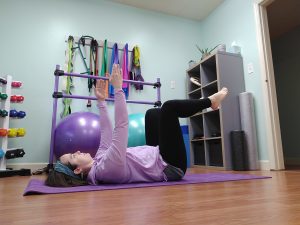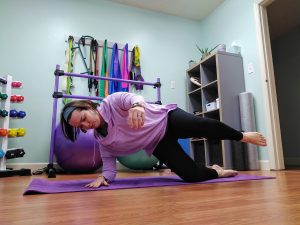
Dynamic Neuromuscular Stabilization (DNS) is a manual and rehabilitative approach to optimizing the body’s movement system based upon the scientific principles of developmental kinesiology (DK). The developer of DNS is Professor Pavel Kolar, PT, PhD, a Czech physiotherapist and PhD in Pediatrics who has been influenced by the “greats” of the Prague School of Manual Medicine, including Karel Lewit, Vladimir Janda, Vaclav Vojta, and Frantisek Vele.1
DNS was originally developed to treat children with neuromuscular conditions. Since its inception in the 1960s the implications of the approach have expanded through research and it is now indicated for a variety of conditions in both the child and adult. The purpose of the technique is to promote proper activation and coordination of the neuromuscular system. This approach compares the stabilization pattern used by a patient with the stabilization developmental pattern that develops naturally as a result of the typical developmental sequence in a healthy baby.2
Many patients with low back pain do not use their diaphragm and deep stabilizing system properly. DNS treatments routinely begin with proper training of the diaphragm by normalizing breathing patterns and restoring the stabilizing function of the diaphragm. DNS treatment can include joint mobilization and soft tissue and trigger point therapies, along with active movement and exercise to restore proper function of the body’s stabilizing system. Restoring proper function to the deep stabilizers (core) is important for treating back and disc problems but also is essential to provide a stable base for treatment of peripheral joint issues such as hip, knee, shoulder, ankle, and foot problems.
 In addition to core stabilization, DNS focus on joint centration. Joint centration is established when the joint surfaces are positioned in a way that provides the greatest joint congruency and the best mechanical advantage for the muscles that support that joint throughout its entire range of motion. Restoring proper joint centration allows for optimal use of the muscles to support the joint with minimal stress to the ligaments, cartilage, and joint surfaces.
In addition to core stabilization, DNS focus on joint centration. Joint centration is established when the joint surfaces are positioned in a way that provides the greatest joint congruency and the best mechanical advantage for the muscles that support that joint throughout its entire range of motion. Restoring proper joint centration allows for optimal use of the muscles to support the joint with minimal stress to the ligaments, cartilage, and joint surfaces.
DNS treatment helps to normalize joint and muscle function, improve stability, reduce pain, and improve your quality of life. Dr. Mindy Nagel of College Hill Pilates and Physical Therapy LLC participates in extensive study of DNS and utilizes these principles and techniques in treating patients. She is a certified DNS exercise trainer and utilizes DNS as part of a comprehensive and individualized physical therapy program.
To learn more, please call our office at (513) 445-WELL (9355) or schedule an appointment through our Client Portal.
Footnotes
- Frank, C, Kobesova A, Kolar P. Dynamic Neuromuscular Stabilization and Sports Rehabilitation. Int J Sports Phys Ther. 2013 Feb; 8(1): 62–73.
https://www.ncbi.nlm.nih.gov/pmc/articles/PMC3578435/ - http://www.rehabps.com/VIDEO/DNS_What_Is.html